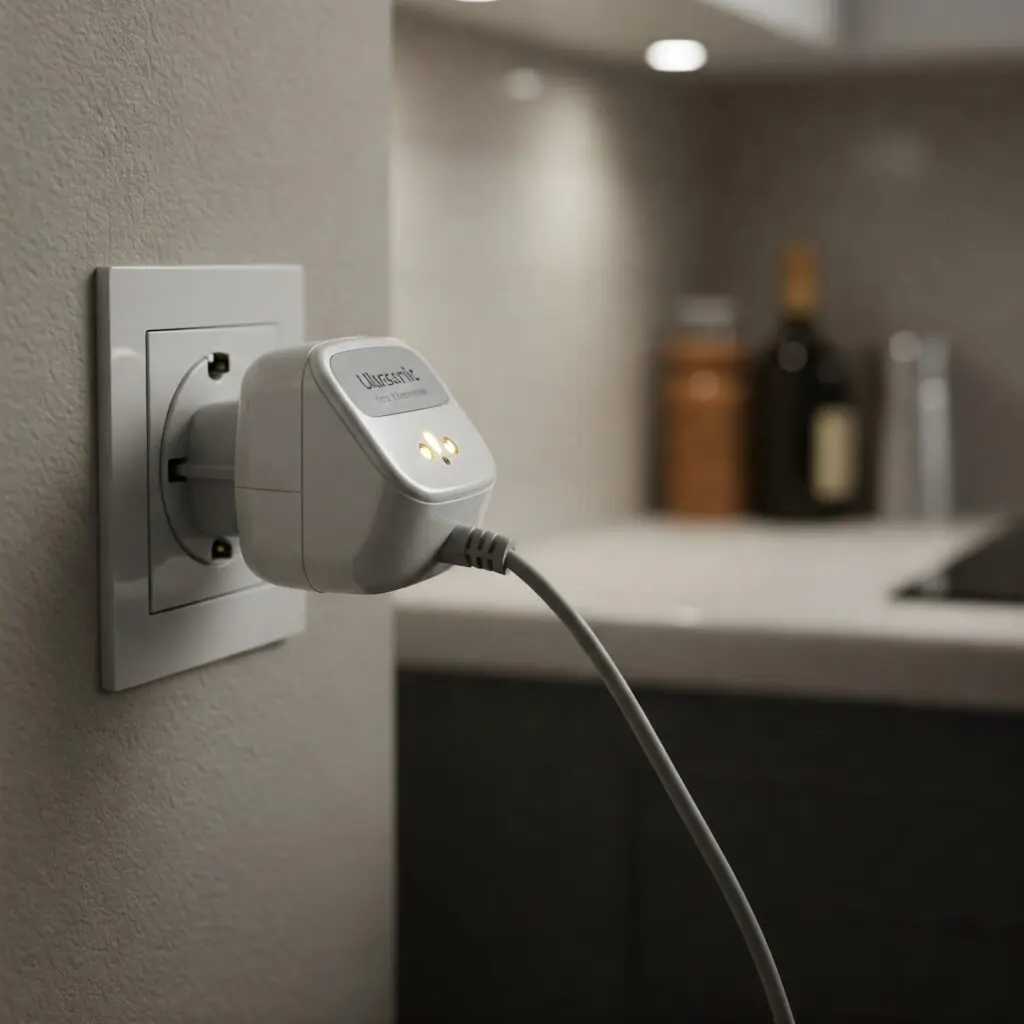Does Ultrasonic Pest Control Work? Let’s Ask The Expert.

Does Ultrasonic Pest Control Work in Kansas City
Picture this: you’re in your kitchen at midnight, craving a snack, when a cockroach does a tap dance across your counter. Or maybe a mouse darts out, giving you a heart attack mid-bite. Desperate for a fix, you stumble across an ad for an ultrasonic pest repeller—a magical gadget promising to shoo pests away with high-pitched sound waves, no chemicals needed. Sounds like a dream, right? But does ultrasonic pest control work? Spoiler alert: I dove deep into the research, and the answer might make you want to toss that plug-in gizmo out the window. Let’s break it down with a sprinkle of humor and a whole lot of truth.
What’s the Deal with Ultrasonic Pest Repellers?
These little devices are like the DJs of Kansas City pest control, blasting sound waves above 20 kHz—too high for human ears but supposedly pure torture for roaches, mice, and other uninvited guests. The pitch is tempting: plug it in, and pests pack their bags. No traps, no sprays, just vibes (literally). They’re marketed as eco-friendly and humane, which sounds great until you realize pests might not be RSVP-ing to this soundwave party. So, do they actually work, or are we just buying fancy nightlights?
The Science Says… Meh “Yeah, not impressed”
I scoured the web, and the science on ultrasonic pest repellers is about as convincing as a used car salesman. A 2002 study from Kansas State University (shoutout to the Wildcats) tested these devices and found they might annoy crickets but do squat for cockroaches, ants, or spiders. Apparently, roaches aren’t fazed by high-pitched raves. Worse, pests can get used to the noise, like teenagers ignoring their parents’ nagging. Rodents just shrug off the sound after a bit, ready to raid your pantry again.
The Federal Trade Commission (FTC) isn’t buying the hype either. In 2001, they sent warning letters to over 60 companies for making big claims with zero proof, and one got slapped with a lawsuit in 2003 for doubling down. McGill University’s Office for Science and Society calls the science “ultra-shaky,” pointing out that studies on these gadgets are either scarce or lack proper controls. It’s like trying to prove a unicorn exists with a blurry Polaroid. Bottom line? The evidence is thinner than my patience when a mouse chews through my cereal box.
Real Talk: Do They Work in Your House?
Okay, so the lab says “nah,” but what about real life? Some folks swear by these devices, claiming their pest problems vanished after plugging one in. I get it—hope is a powerful drug. But experts like ZipZa Termite & Pest Control warn that any success is usually short-lived. Pests might scatter at first, spooked by the new noise, but they’ll be back, probably with tiny earplugs. Plus, your house isn’t a sound studio. Walls, couches, and that pile of laundry you’ve been ignoring block the waves, leaving plenty of pest-friendly dead zones.
Then there’s the pet problem. While we humans can’t hear the ultrasonic hum, your hamster, guinea pig, or even Fido might. The Spruce notes that hamsters can hear up to 90 kHz, cats up to 60 kHz, and dogs up to 40 kHz. Imagine your pet hamster losing it because your pest repeller is blasting the equivalent of a heavy metal concert. No studies confirm long-term harm, but if your cat starts giving you the stink eye, it might be time to unplug.
Oh, and don’t forget: these devices can mess with other electronics. InterNACHI’s report lists horror stories like garbled phone calls, muted hearing aids, and even burglar alarms throwing tantrums. So, you might scare off a mouse but accidentally tank your Zoom meeting. Is it worth it? Probably not.
Why Ultrasonic Pest Control Flops: The Nitty-Gritty
If you’re still holding out hope, let’s talk about why these gadgets struggle. The Spruce lays out the hurdles like a pest-control obstacle course:
- Room size: Big spaces dilute the sound, so your open-plan living room is a no-go.
- Furniture: That cozy sectional? It’s a soundwave shield, letting pests chill in peace.
- Placement: You’ve got to put the device right where pests hang out, like near entry points. Good luck guessing their VIP spots.
- Weather: Dust, rain, or humidity can muffle the sound, because even sound waves hate Missouri summers.
- Pest type: Different pests need different frequencies, and most devices aren’t tailored enough to care.
It’s like expecting one playlist to please everyone at a family reunion. Ain’t happening.
So, What Does Work If Ultrasonic Pest Control Does Not Work
If ultrasonic repellers are a bust, how do you keep your home from turning into a pest Airbnb? Here’s the playbook, and it’s way more effective than hoping for a sonic miracle:
- Clean like your mom’s coming over. Sweep up crumbs, store food in sealed containers, and take out the trash before it becomes a pest buffet. A clean house is a boring house for roaches and mice.
- Seal the deal. Caulk cracks, fix gaps around doors, and screen vents. If pests can’t get in, they can’t crash your party.
- Trap it, zap it. Snap traps or live traps work for rodents, while baits and other products tackle insects. Just check them regularly unless you want your house smelling like a horror movie set.
- Go natural (sort of). Peppermint oil or diatomaceous earth can help with minor pest problems, but don’t expect miracles. They’re like the kale smoothie of pest control—healthy, but not a cure-all.
- Call the pros. Companies like ZipZap Termite & Pest Control have the tools and know-how to kick pests to the curb for good. Their bundled plans cover everything from roaches to rats, so you’re not playing whack-a-mole with DIY fixes.
The Verdict: Save Your Money
So, does ultrasonic pest control work? In a word: nope. Okay, maybe it’s not completely useless—some pests might flinch for a hot minute—but it’s about as reliable as my old car in a snowstorm. The science is shaky, pests adapt, and your house’s layout is basically a soundwave kryptonite. Plus, you might stress out your pets or fry your Wi-Fi just to chase a dream that doesn’t deliver.
Instead, stick to the basics: keep your place clean, seal it tight, and don’t be afraid to call in the big guns for professional help. Your wallet (and your sanity) will thank you. Next time you’re tempted by a gadget promising to solve your pest problems with magic soundwaves, remember: the only thing getting repelled might be your common sense. Let’s keep the pests out and the good vibes in—no ultrasonic DJ required.

Jeffery Preece, BCE, PHE
Jeffery Preece is the owner and technical director of ZipZap Termite & Pest Control.



